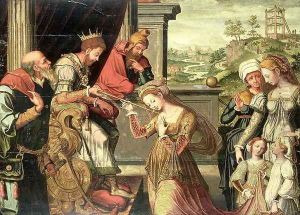(studio of) Claeissens, Anthuenis (1536-1613) Paintings
Anthuenis Claeissens, also known as Anthonis or Antoon Claeissens, was a Flemish painter born in the year 1536 in Bruges, which was then part of the Spanish Netherlands. He hailed from a family of painters and was the son of Pieter Claeissens the Elder and the brother of Pieter Claeissens the Younger, both of whom were also accomplished artists. Anthuenis became a member of the Guild of St. Luke in Bruges and took over his father’s position as the official city painter after his father’s death.
Claeissens' work primarily consisted of religious themes and historical scenes, though he also painted portraits and allegorical subjects. His style was influenced by the Renaissance and the Mannerist movements that were sweeping through Europe at the time. His paintings were known for their intricate details, use of vibrant colors, and the incorporation of classical elements. Despite the prominence of the Reformation and the iconoclasm that occurred in the region, Claeissens maintained a successful career, producing altarpieces and artwork for local churches and the city of Bruges.
Anthuenis Claeissens’ studio became one of the most productive and well-known in Bruges. His sons, Gillis and Pieter II, were also trained as painters in his studio and continued the family tradition. The 'studio of Claeissens' implies that the works attributed to Anthuenis could have been collaborative efforts involving his family members and apprentices.
Anthuenis Claeissens died in 1613, leaving behind a considerable body of work that contributes to our understanding of the Northern Renaissance and the transition into Baroque art. His legacy is preserved in various European art collections, museums, and churches, where his historical significance as part of a familial lineage of painters is recognized.
